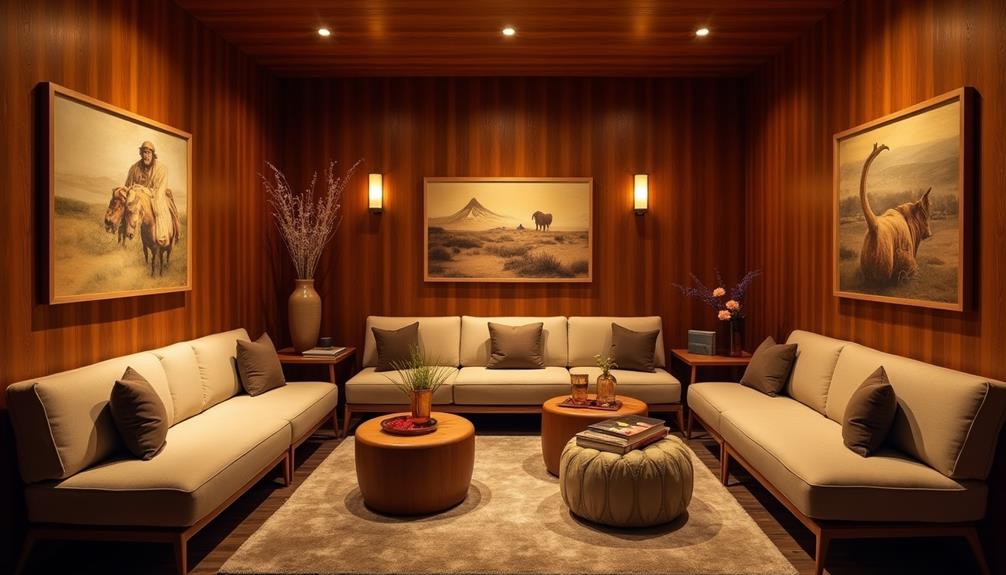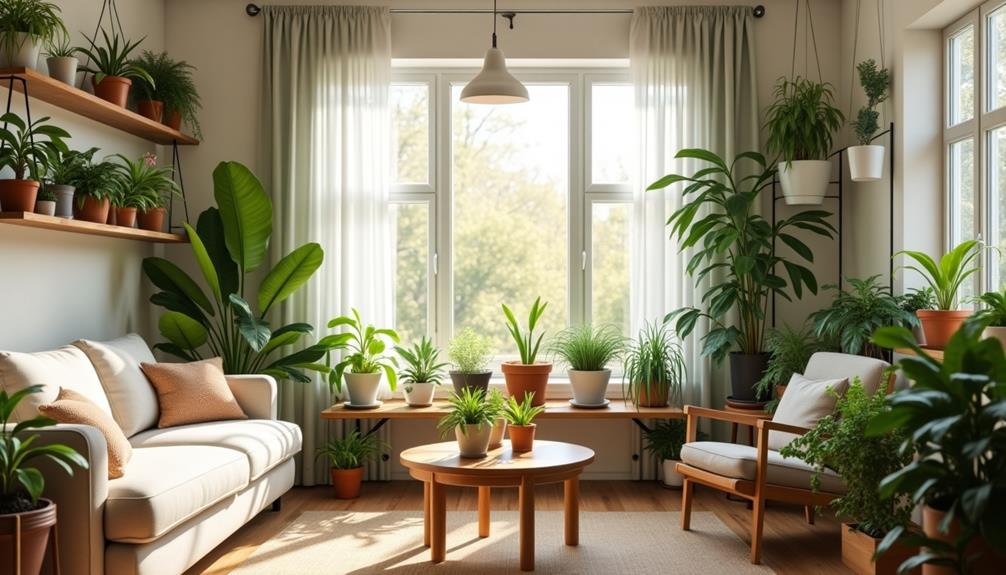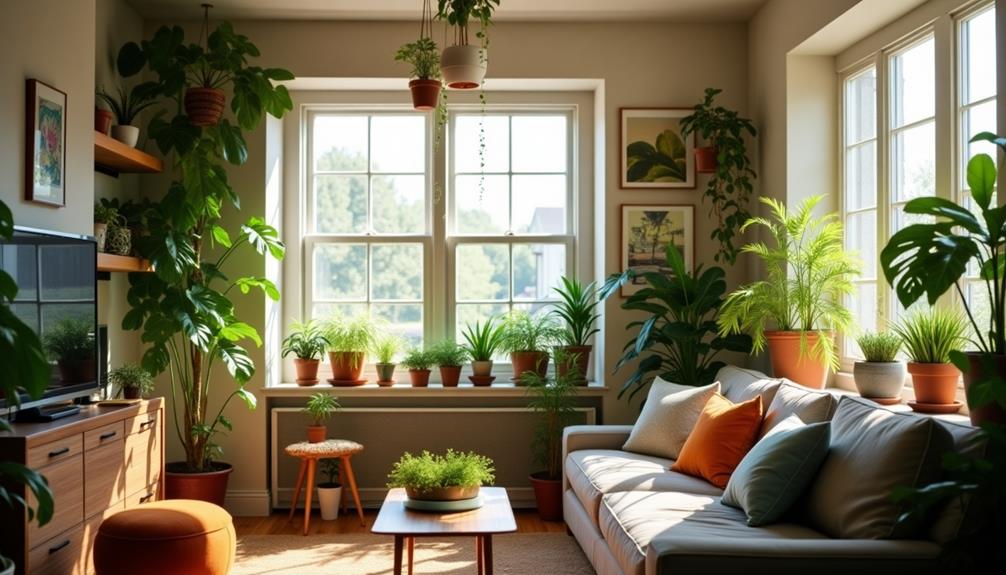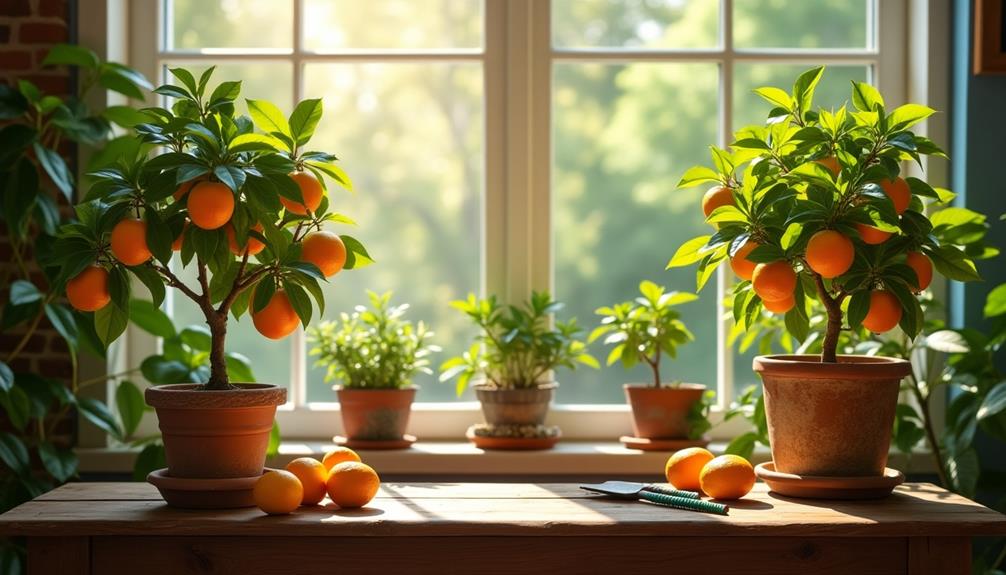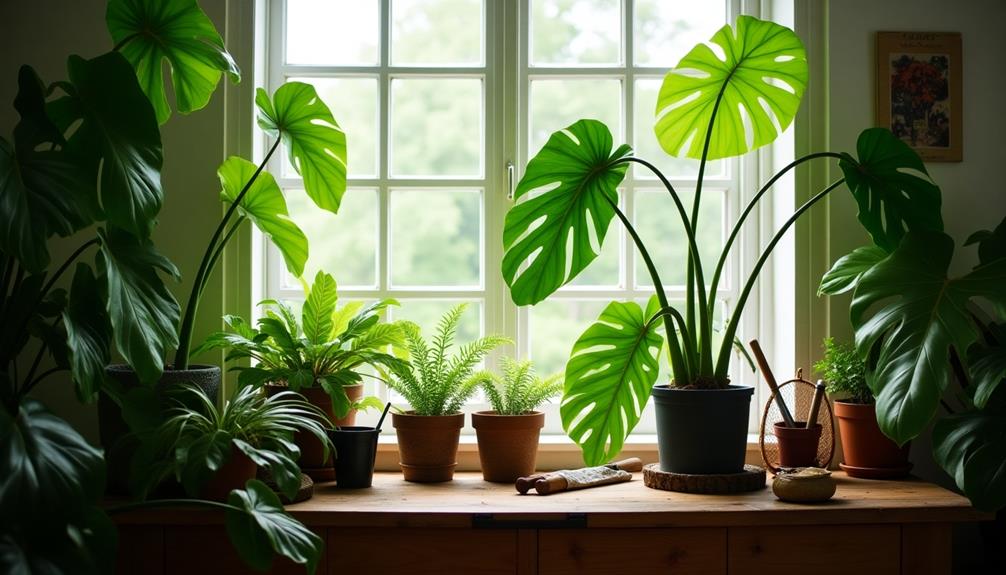Imagine stepping into a living room with rich, reclaimed wood paneling that tells a story of its own. You can easily enhance the character of your space with various styles and finishes that suit your taste. But before you rush into a decision, consider how different wood types and installation techniques can impact your overall design. What might be the perfect choice for your home? Let's explore the myriad ways wood paneling can not only elevate your aesthetic but also create a warm, inviting atmosphere.
Benefits of Wood Paneling
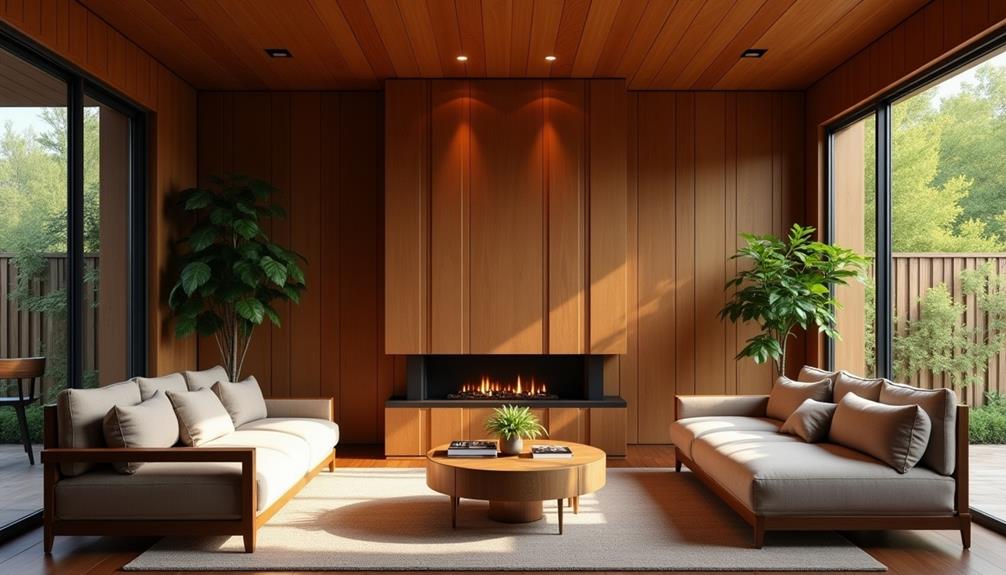
Wood paneling can transform a space, adding warmth and character that other materials simply can't match. Its aesthetic appeal is undeniable, creating a cozy atmosphere that invites relaxation.
Beyond looks, wood paneling offers impressive acoustic benefits, absorbing sound and reducing noise in your home, making it perfect for busy households. When considering environmental impact, responsibly sourced wood can significantly lower your carbon footprint, especially when compared to synthetic materials.
You'll also appreciate its insulation properties, which help regulate indoor temperatures and can reduce energy costs. Durability factors are another major plus; high-quality wood paneling can withstand wear and tear over the years, making it a smart investment.
Furthermore, the design versatility of wood allows you to integrate it into various styles, from rustic to contemporary, ensuring it fits seamlessly into your vision.
Don't forget wood's historical significance—it brings a timeless quality to interiors that evokes a sense of nostalgia. As modern trends lean toward sustainability and natural elements, wood paneling stands out as a chic choice, marrying style with practicality.
Embrace the benefits of wood paneling, and watch your space come alive.
Popular Wood Paneling Styles
Character and charm define the various styles of wood paneling that can elevate your space. One of the most popular choices is the shiplap style, characterized by its horizontal boards that create a clean, streamlined look.
You'll often see it in modern farmhouse designs, where it brings a touch of rustic elegance. Installing shiplap can easily transform a room, adding depth and visual interest without overwhelming the space.
Another fantastic option is reclaimed wood paneling. This style uses salvaged wood from old barns, factories, or homes, giving your walls a unique history and a warm, weathered appearance.
The beauty of reclaimed wood lies in its imperfections—each piece tells a story, making your space feel more inviting and personal.
If you're looking for something more contemporary, consider vertical paneling. This style can elongate your walls, making your ceilings feel higher.
Regardless of the style you choose, wood paneling can enhance your home's character and add a sense of warmth that's hard to replicate with other materials.
Choosing the Right Wood Type
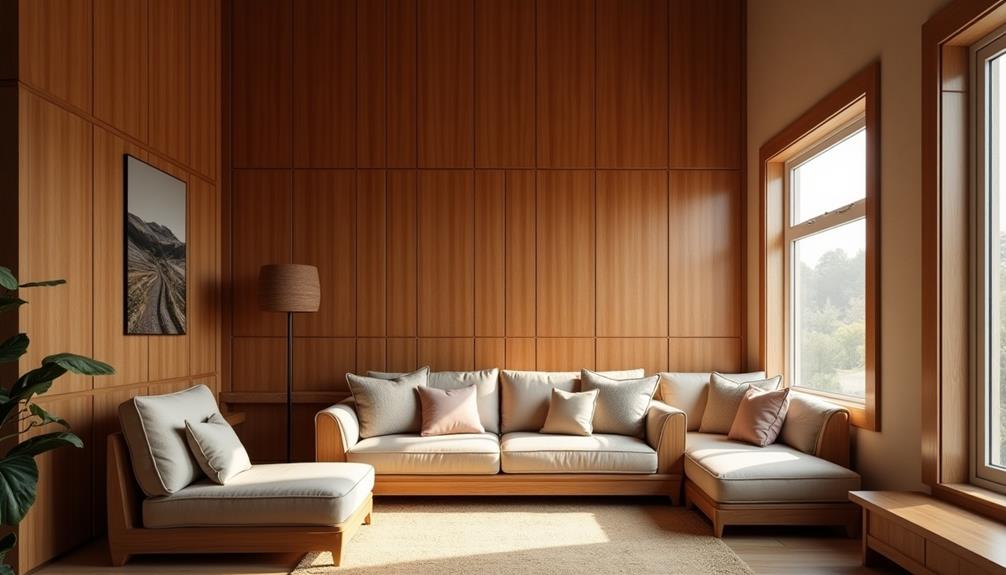
Selecting the right wood type is crucial for achieving the desired aesthetic and durability in your paneling project. Start by considering your hardwood selection, as different species offer unique characteristics. For instance, oak provides a classic look with its pronounced grain, while maple offers a sleek, modern finish. You'll want to think about the color and texture that will complement your space.
Next, consider how wood finishes will enhance your paneling. Some woods take stains and varnishes better than others, allowing you to achieve various looks—from a rich, dark hue to a lighter, natural tone. If you prefer a rustic vibe, you might opt for a distressed finish on reclaimed wood, whereas a smooth, polished finish could suit a contemporary setting.
Don't forget about durability. Hardwoods like hickory and cherry aren't only beautiful but also stand up to wear and tear, making them ideal for high-traffic areas.
Ultimately, your choice should reflect your style and the functionality you need. By carefully weighing your hardwood selection and wood finishes, you'll create paneling that adds character and lasting appeal to your space.
Techniques for Installation
When it comes to installing wood paneling, getting started on the right foot can make all the difference. First, gather your installation tools—like a level, stud finder, tape measure, and a quality saw. These will ensure a precise and efficient installation.
Next, focus on surface preparation. Your walls need to be clean, dry, and smooth for the best results. If there are any imperfections, patch them up and sand the area down. This step prevents any bumps from showing through your beautiful paneling.
Once the surface is ready, measure and mark your layout. Decide whether you want to install vertically or horizontally, and make sure your first panel is straight. It's crucial to check your level often as you work your way up the wall.
Attach the panels with the proper fasteners, ensuring you secure each piece to the studs for stability. If you're using adhesive, apply it evenly to avoid gaps.
Maintenance and Care Tips
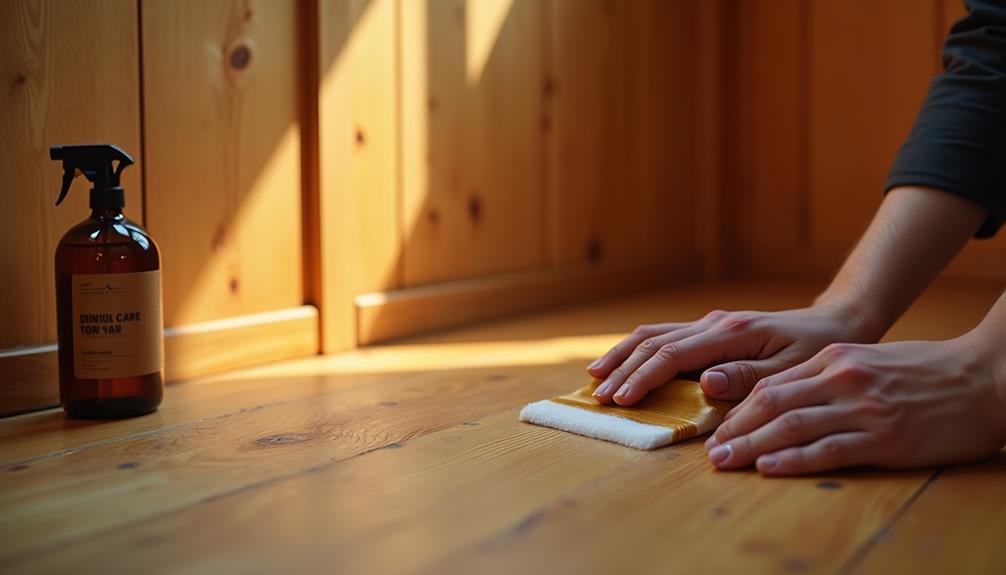
To keep your wood paneling looking its best, regular maintenance is key.
Start by choosing the right cleaning methods to prevent damage. Use a soft, dry cloth for dusting and avoid harsh chemicals that can strip the finish. If your paneling needs a deeper clean, mix a mild soap with water, dampen a cloth, and gently wipe the surface.
Always remember to dry the paneling right after cleaning to prevent moisture damage.
Sealing options are crucial for protecting your wood paneling from wear and tear.
Consider applying a wood sealant every few years to maintain its luster and prevent moisture from seeping in. Look for a product specifically designed for wood to ensure compatibility.
Before applying any sealant, make sure to clean the surface thoroughly to achieve the best results.
Creative Design Ideas
When it comes to wood paneling, you can really get creative with unique patterns and textures that add depth to your space.
Consider using accent walls to make a bold statement or highlight specific features in the room.
These design ideas can transform your space and showcase your personal style.
Unique Patterns and Textures
Exploring unique patterns and textures in wood paneling can transform any space into a stunning showcase of design creativity. By incorporating geometric designs, you can create a modern vibe that captivates attention.
Think about using triangles, hexagons, or chevrons to add depth and visual interest to your walls. These patterns can be achieved using various wood types, allowing you to play with colors and finishes.
Reclaimed wood is another fantastic option for achieving unique textures. Its weathered appearance and varied grain patterns bring warmth and character to any room.
You can mix reclaimed wood with fresh pieces to create striking contrasts that enhance your design. Layering different types of wood can also create an engaging tactile experience, inviting people to run their hands along the surfaces.
Experimenting with orientation is key, too. Horizontal or vertical placements can dramatically change the perception of a space.
Consider creating an ombre effect by blending different shades of wood for a contemporary twist. With these ideas, you're well on your way to elevating your interiors with unique patterns and textures, making your home truly one-of-a-kind.
Accent Walls and Features
An accent wall can instantly elevate a room, adding depth and character that draws the eye. Choosing the right wood paneling for your accent wall can create a stunning focal point.
Consider rich, dark tones against lighter walls for a dramatic effect, or opt for a softer hue to keep things airy and inviting.
When it comes to color combinations, think about how the wood will complement your existing decor. Pair a warm wood with earthy tones for a cozy vibe, or mix it with bright colors for a modern twist. This contrast can help the accent wall pop without overwhelming the space.
Furniture pairing is crucial, too. If your accent wall features bold wooden planks, balance it out with sleek, minimalist furniture to avoid a cluttered look. Alternatively, if you choose rustic paneling, incorporate vintage or farmhouse-style pieces to create a cohesive atmosphere.
Don't forget about lighting—it can enhance the beauty of your wood paneling. Using strategically placed lights can highlight the textures and colors, making your accent wall a true statement piece.
Budgeting for Your Project
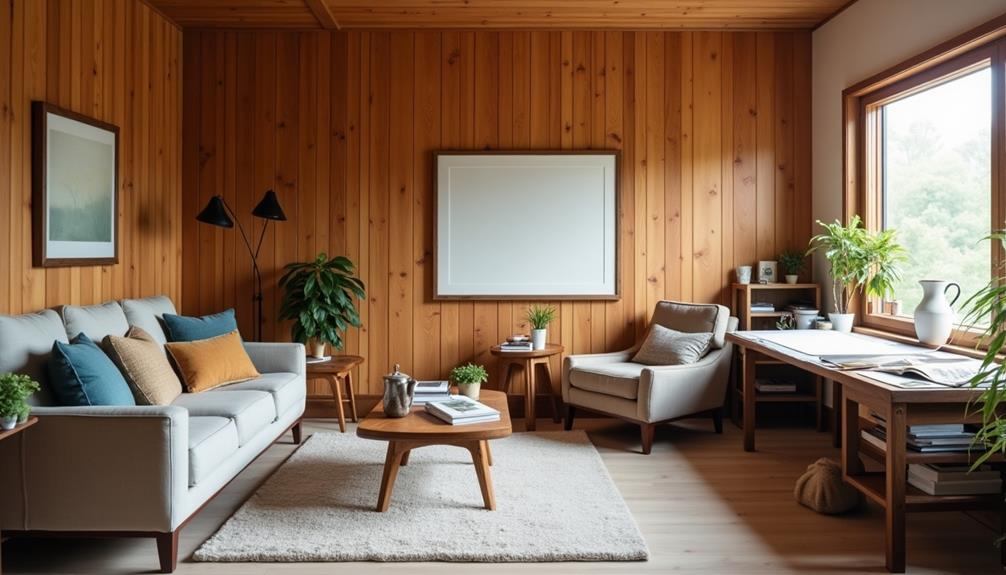
When budgeting for your wood paneling project, it's crucial to set a realistic budget that reflects your design goals.
Consider cost-effective material choices that can help you achieve the look you want without breaking the bank.
Setting a Realistic Budget
Before diving into your wood paneling project, it's crucial to nail down a realistic budget. Start by creating a cost breakdown that includes materials, labor, and any additional expenses like tools or finishes. This will give you a clearer picture of what you'll spend.
Don't forget to account for unexpected costs, which can pop up during the project.
Next, consider your project timeline. How long do you expect the project to take? If you're doing the work yourself, factor in your availability and any time constraints you might have. If you're hiring a contractor, ask them about their schedule and potential delays.
Understanding how your timeline impacts your budget is key; a rushed job can lead to overspending.
Once you've gathered this information, compare it against your overall budget to ensure you're on track. If certain costs seem too high, you might want to adjust your material choices or even the scope of your project.
Cost-Effective Material Choices
Finding cost-effective material choices can significantly stretch your budget while still achieving the desired look for your wood paneling project.
Reclaimed wood is an excellent option, offering character and sustainability at a lower cost. If you want something more uniform, consider plywood panels; they're affordable and easy to install.
For a budget-friendly alternative, MDF options provide a smooth surface that's perfect for painting or finishing.
Don't overlook decorative trim, which can add a polished finish to your project without breaking the bank. Doing some cost comparisons among various materials can help you find the best deals.
If you're feeling handy, explore DIY alternatives like pallet wood or even laminate finishes that mimic the look of real wood at a fraction of the price.
These eco-friendly choices not only save money but also reduce waste.

